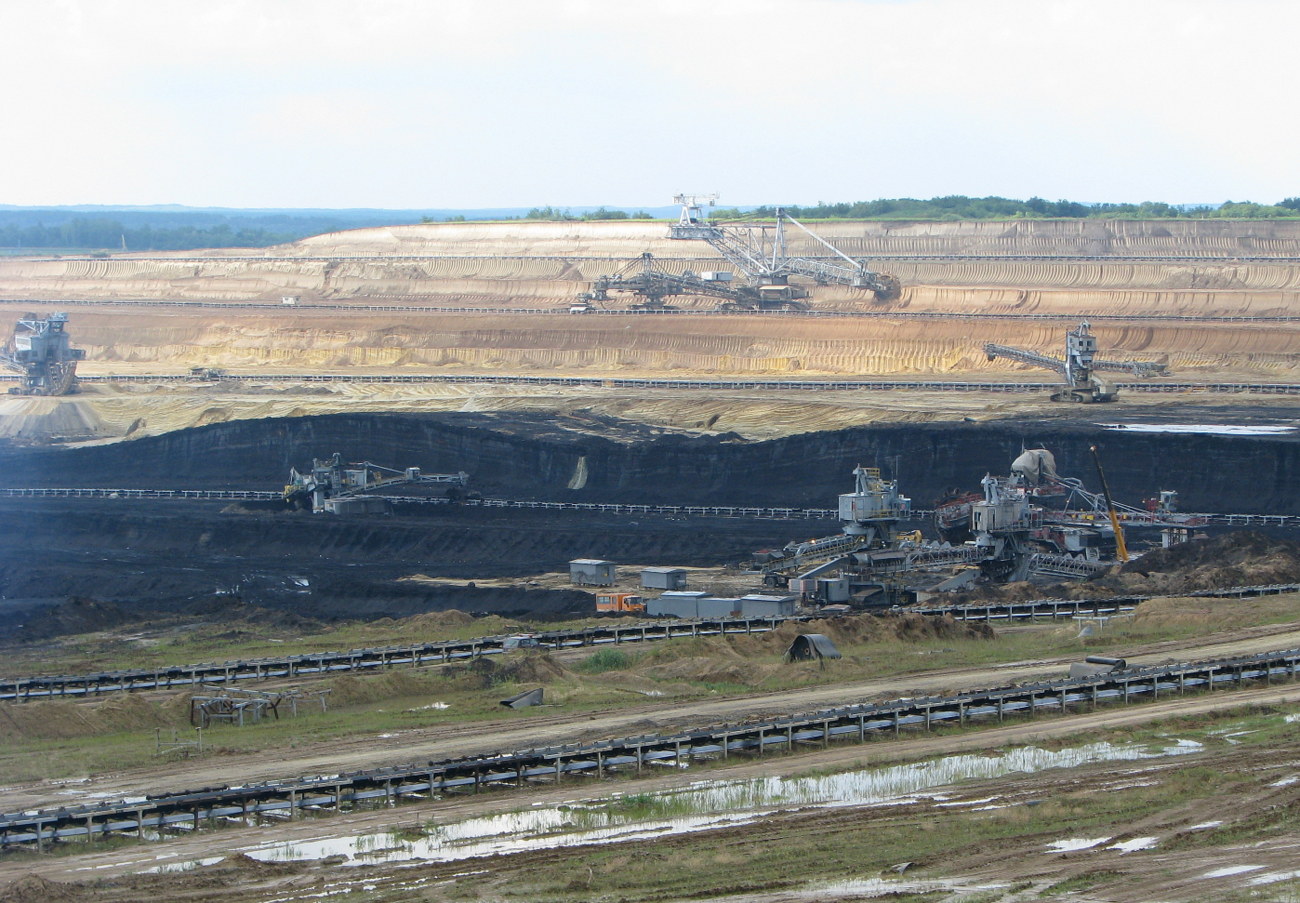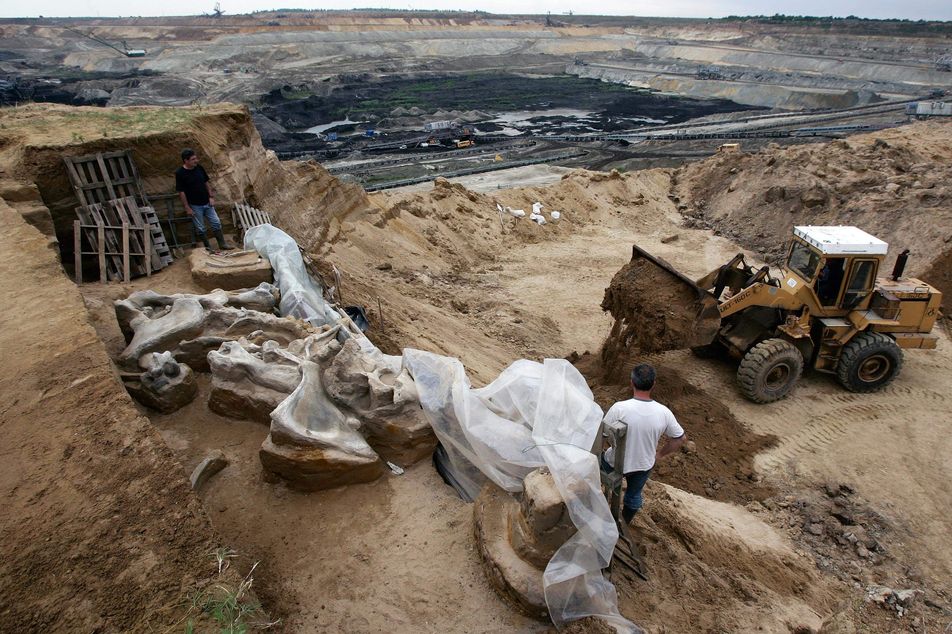Drnmo
The Drmno open coal mine in Serbia -- 44.73, 21.24 in the ultra emitters map -- is just south of the Danube, and close to the frontier with Romania. It is near the archaeological site of the old Roman city of Viminacium, and a "Mammoth Park," after the largely intact skeleton of a million-year old mammoth was found in the mine in 2009. (It was a Middle Pleistocene "steppe" mammoth, "remarkable for its completeness and excellent state of preservation," and "preserved in death position" near "the north-east rim of the Drmno pit," at 44.43, 21.14.)
The coal mines around Drmno have been exploited since the 1870s, with an expansion of foreign investment in the 1880s. The region was part of the Bulgarian-German zone of occupation in World War Two; the miners of Drmno were central to protests during the Serbian revolution of 2000. In the 2010s, the Drmno mine -- and the Kostolac power plant that it supplies -- have been extended by the Chinese Machinery Engineering Corporation, with financing from the Chinese Export-Import Bank.


The coal complex is a source of air, water and soil pollution, in the local environment and across the frontier with the European Union. The power plant is considered to be the worst source of sulfur dioxide emissions in Europe, with grave consequences for health; the mine, near the confluence of the Danube and the Mlava, is subject to "infiltration by groundwater," and the groundwater is at risk from the mine. The Serbian NGO Renewables and Environmental Regulatory Institute (RERI) won a court case, in November 2022, requiring the Public Energy Company to reduce sulfur dioxide emissions; reducing methane emissions is also part of environmental protection, in the micro-scale of Drmno and the macro-scale of global climate change.
